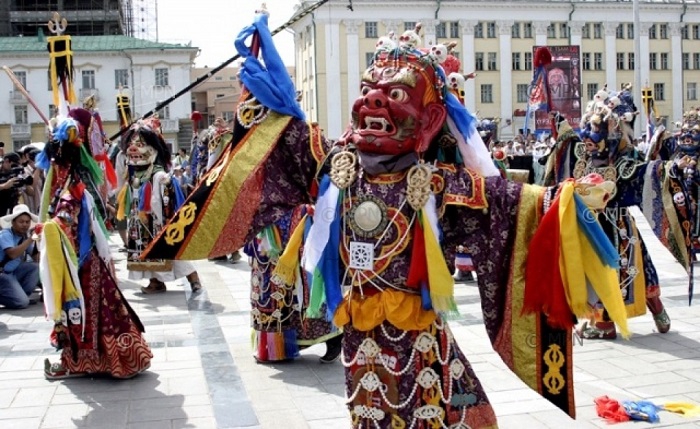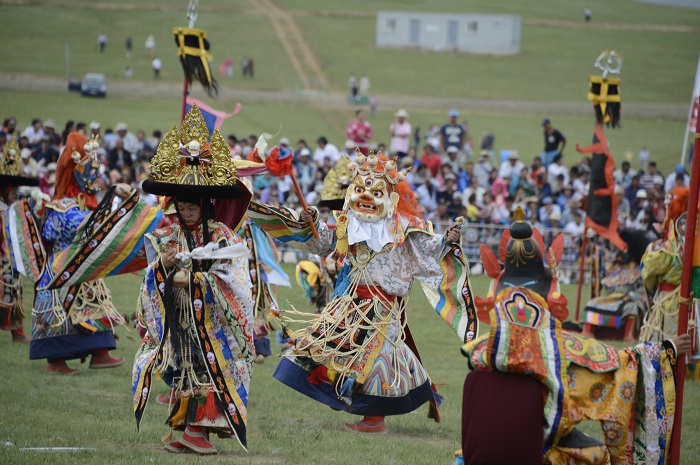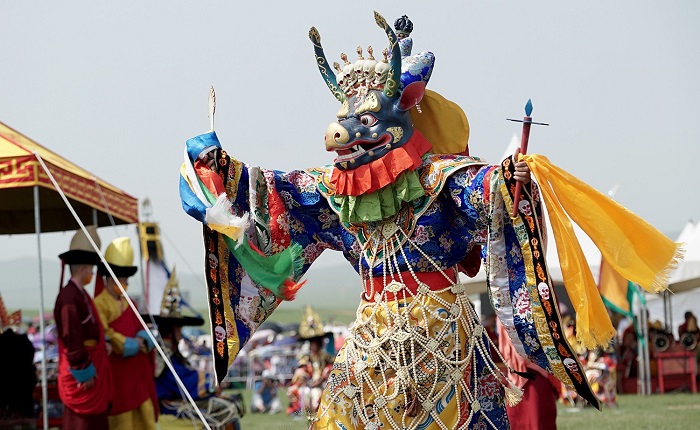Posted by Selena Travel / 07 27, 2024
It’s the beginning of the end of Mongolia’s short summer season. Today is a big day for our young monk. Let’s call him Davaa, a good Tibetan name. His name means Monday, and his parents may have chosen his name because he was born on a Monday. The name also honors Tibetan Buddhism, which is practiced in Mongolia. He has only been at the monastery for a year, and he’s going to participate in his first Tsam ceremony. The tsam dances, are morality plays. Their purpose is to remove evil from the area and pass along traditional stories and morals. There can be hundreds of participants, usually monks. Davaa is lucky to participate because he’s still a young monk.
Every morning, Davaa and his fellow monks perform a ceremony to praise the gods the masks the they wear represent. The masks are larger than a person’s head and made of paper-mâché. They also have large wigs made of yak hair. All of the masks at the monastery were made by an artisan who has re-learned the old ways. Lamas and practitioners see out of holes in the masks’ mouths. This is because the eyes should not be pierced. Devout lamas believe that the masks form a place for the gods to reside while they perform the dance, hence the daily ceremonies to the masks. They have to show the gods that they care.
Davaa can hear the 20-person orchestra warming up before the ceremony. The musicians sit in two lines. Half the percussion section sits in the front. It is composed of tambourines and drummers. The wind instruments are seated behind them and are joined by the cymbalists. The wind section can have some interesting instruments. In addition to copper trumpets and conch shells, there are bone flutes. These are made from a human femur, though probably Davaa would not see a real one. Before he knows it, the ceremony is starting.

There are many individual tsam ceremonies and dances. They go in a specific order. Once the orchestra gets started, two characters wearing skull masks representing death, walk around the circle and chant mantras. Other dancers soon follow. One that usually joins is the White Old Man. He is a shamanist figure that was part of the older religion of Mongolia. Before Buddhism came to Mongolia, the people practiced shamanism. The White Old Man represents fertility, and usually has some comic roles while showing wisdom. Khashin Khan, or the Ruler Who Invites, brings in more evil looking characters. There is the God of War, the Guardian of Religion and the God of Wealth.

The God of Wealth has an important role. He is meant to banish evil into a figure called a lingka. It is made of fast-rising flour. Some scholars have said that this is linked to pre-Buddhist human sacrificial ceremonies in Mongolia. Regardless, Davaa watches as the figure starts to swell as the orchestra continues to play and the other lamas begin to chant. A stag-masked lama comes with a sword and tears the lingka into pieces. This is meant to symbolize cleansing evil from the world.
In school, Davaa heard about how the Communists attacked Buddhism. They killed many monks, destroyed most of the monasteries, and destroyed the tsam masks. Davaa may have learned that over 500 of Mongolia’s 700 temples and monasteries used to hold tsam performances. The monks were allowed to perform then again in 1992, after the country transitioned to democracy.
It’s now Davaa’s time. Davaa is going to wear the mask for the god that helps end the performance. He is the last masked character to show up to the ceremony. Wearing a shiny, black buffalo head, he slowly walks into the circles of chalk on the ground. In one hand is a lasso, and Davaa waves it around to demonstrate catching souls. In the other he carries a skeleton shaped scepter. It provides a fitting end to the ceremony.

Finally, the dance is over. In the evening, the monks return to the regular duties at Gandan monastery. The tsam dance has its roots in Tibet, and only came to Mongolia relatively recently in the 1800s. In fact, it’s cham in Tibetan. Davaa had participated in the ceremony where it was first recorded as happening, in Ikh Huree. This was Ulaanbaatar’s name before Communism. The young adepts and other lamas will reverently put the masks back where they belong until the New Year, when they will perform again.